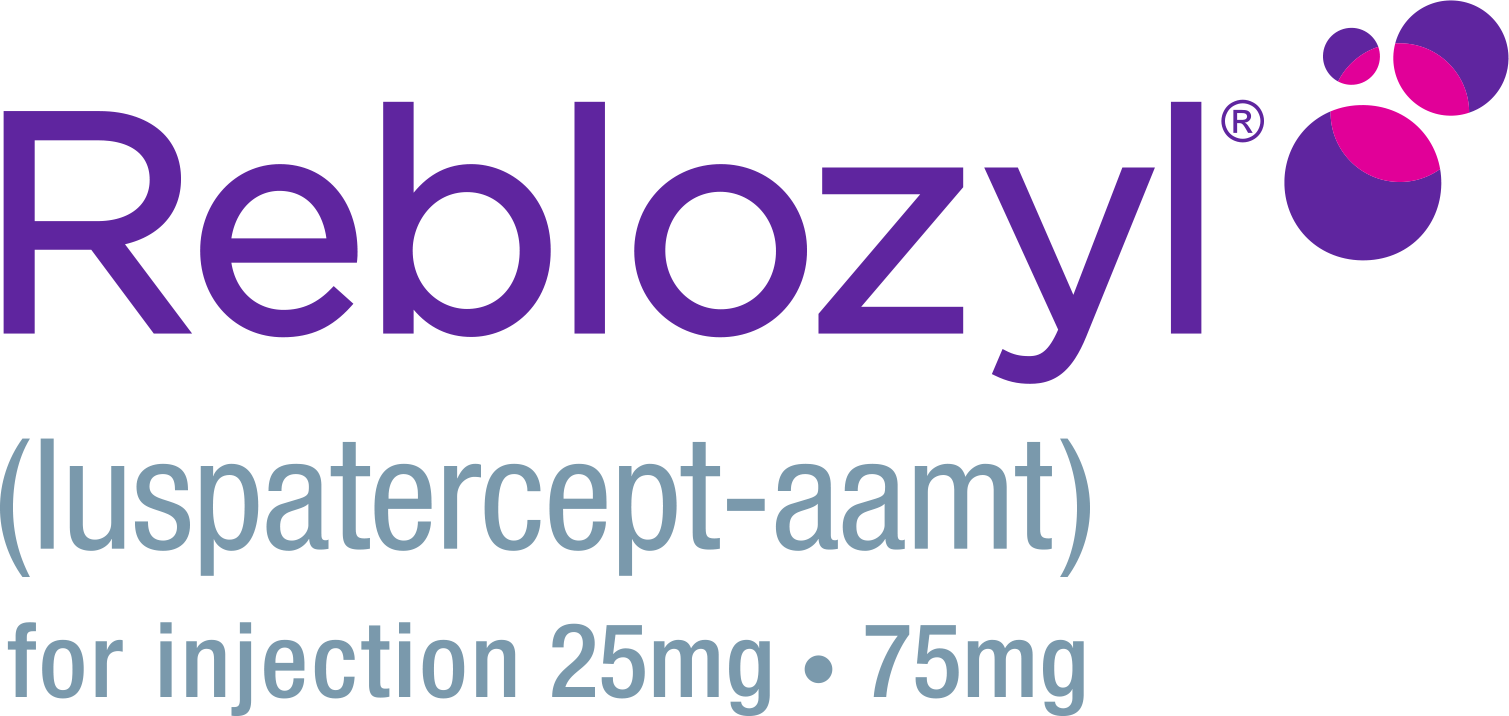LR-MDS AND REBLOZYL: ESA LIMITATIONS AND THE NEED FOR REBLOZYL
Most patients don’t respond to ESAs1
For your newly diagnosed patients with LR-MDS–associated anemia
Will ESAs meet your treatment goals?
SOHO 2024: A retrospective real-world analysis of patients with 1L LR-MDS treated from 2018-2023 at Florida Cancer Specialists & Research Institute (FCS)1

Based on NCCN Clinical Practice Guidelines in Oncology (NCCN Guidelines®), no response
to ESAs is defined as
<1.5 g/dL
rise in Hgb
OR
no decrease
in RBCT requirement
by 6-8 weeks of treatment2

359 total patients1,3
RS- (<5%)
59%
(n=213)
EPO <200 U/L
59%
(n=211)
Median sEPO
47.5 U/L
(n=243)


It’s time to start strong with a different option.

Analysis limitations: Results should be interpreted with caution, as this was a retrospective analysis from a single large cancer center and cohorts were not prospectively defined nor powered to detect significant differences.1
*Non-interventional, retrospective review of clinical data from electronic medical records of patients treated at FCS with diagnoses of LR-MDS from 2018 to 2022, 1 year of follow-up data from initial diagnosis, ≥6 months of data prior to diagnosis, LR-MDS at diagnosis defined as IPSS score of low or intermediate-1 or IPSS-R score of very low, low, or intermediate, and age ≥18 years. Patients treated with luspatercept prior to an ESA or those participating in a clinical trial at any time during the study period were excluded. Treatment failure on ESAs was defined as the number and proportion of patients with <1.5 g/dL rise in Hgb by 6-8 weeks of treatment or no decrease in RBCT requirement by 6-8 weeks of treatment.1
†68% of patients experienced ESA failure.1
1L=first-line; EPO=erythropoietin; ESA=erythropoiesis-stimulating agent; Hgb=hemoglobin; IPSS=International Prognostic Scoring System; IPSS-R=Revised International Prognostic Scoring System; LR-MDS=lower-risk myelodysplastic syndromes; MDS=myelodysplastic syndromes; NCCN=National Comprehensive Cancer Network; RBCT=red blood cell transfusion; RS=ring sideroblast; sEPO=serum erythropoietin; SOHO=Society of Hematologic Oncology.
Raise the standard of care with REBLOZYL
References: 1. Fonseca G, Warner A, Ming A, et al. Management of patients with lower-risk myelodysplastic syndromes in a large US community oncology practice: a focus on patient outcomes post erythropoiesis-stimulating agent treatment. Presented at: Society of Hematologic Oncology (SOHO) Annual Meeting. September 4-7, 2024. Houston, TX, USA. 2. Referenced with permission from the NCCN Clinical Practice Guidelines in Oncology (NCCN Guidelines®) for Myelodysplastic Syndromes V.1.2025. © National Comprehensive Cancer Network, Inc. 2024. All rights reserved. Accessed November 18, 2024. To view the most recent and complete version of the guideline, go online to NCCN.org. NCCN makes no warranties of any kind whatsoever regarding their content, use or application and disclaims any responsibility for their application or use in any way. 3. Data on file. BMS-REF-00715-2007. Princeton, NJ: Bristol-Myers Squibb Company; 2023.

